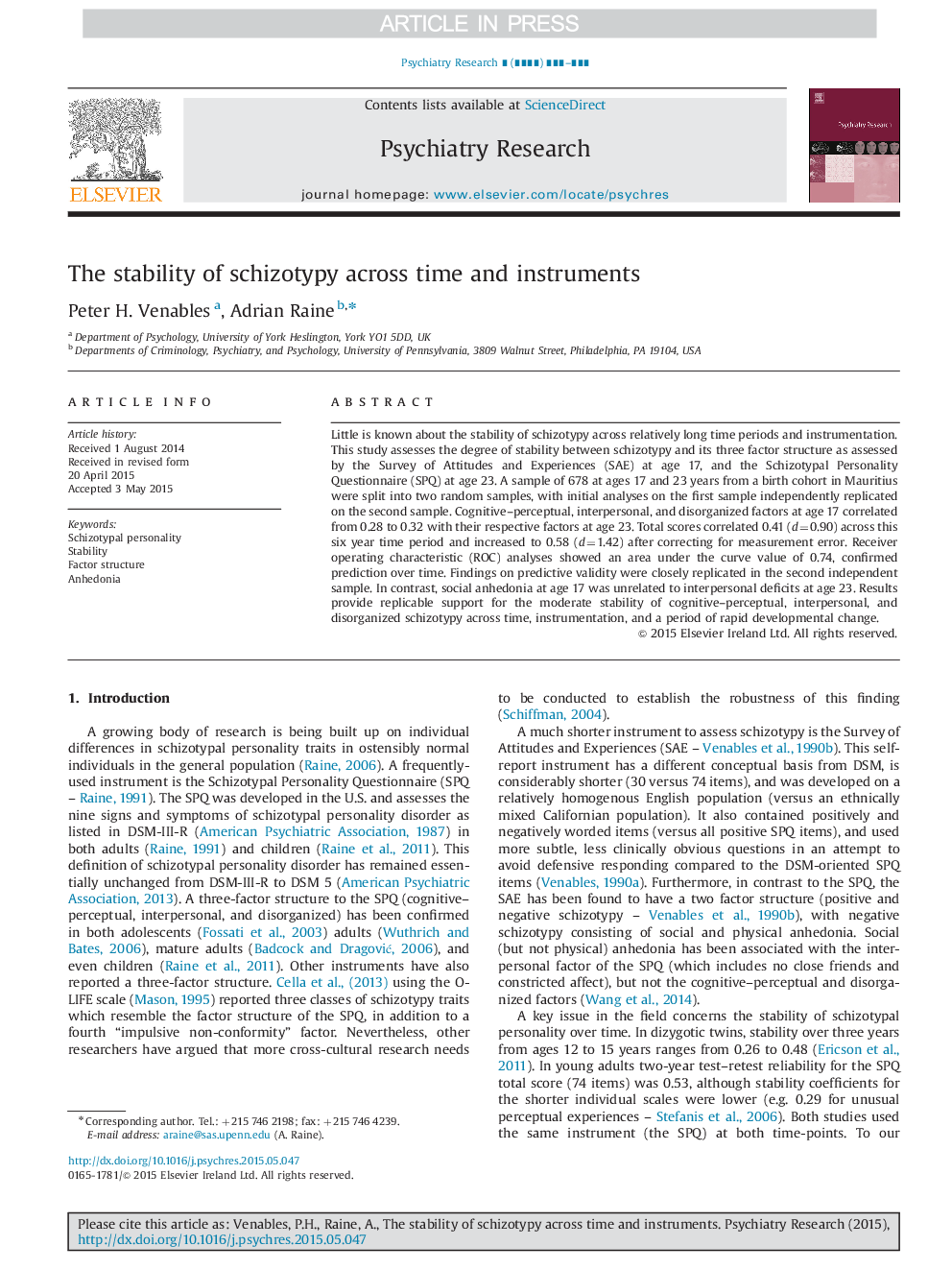| Article ID | Journal | Published Year | Pages | File Type |
|---|---|---|---|---|
| 10303713 | Psychiatry Research | 2015 | 6 Pages |
Abstract
Little is known about the stability of schizotypy across relatively long time periods and instrumentation. This study assesses the degree of stability between schizotypy and its three factor structure as assessed by the Survey of Attitudes and Experiences (SAE) at age 17, and the Schizotypal Personality Questionnaire (SPQ) at age 23. A sample of 678 at ages 17 and 23 years from a birth cohort in Mauritius were split into two random samples, with initial analyses on the first sample independently replicated on the second sample. Cognitive-perceptual, interpersonal, and disorganized factors at age 17 correlated from 0.28 to 0.32 with their respective factors at age 23. Total scores correlated 0.41 (d=0.90) across this six year time period and increased to 0.58 (d=1.42) after correcting for measurement error. Receiver operating characteristic (ROC) analyses showed an area under the curve value of 0.74, confirmed prediction over time. Findings on predictive validity were closely replicated in the second independent sample. In contrast, social anhedonia at age 17 was unrelated to interpersonal deficits at age 23. Results provide replicable support for the moderate stability of cognitive-perceptual, interpersonal, and disorganized schizotypy across time, instrumentation, and a period of rapid developmental change.
Related Topics
Life Sciences
Neuroscience
Biological Psychiatry
Authors
Peter H. Venables, Adrian Raine,
